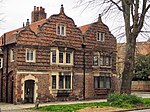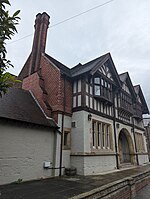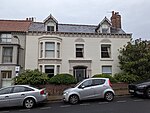St Peter's School, York
7th-century establishments in EnglandAll pages needing cleanupBoarding schools in North YorkshireBuildings and structures completed in 627Church of England private schools in the Diocese of York ... and 6 more
Educational institutions established in the 7th centuryMember schools of the Headmasters' and Headmistresses' ConferencePages containing links to subscription-only contentPeople educated at St Peter's School, YorkPrivate schools in YorkUse British English from February 2015
St Peter's School is a co-educational private boarding and day school (also referred to as a public school), in the English City of York, with extensive grounds on the banks of the River Ouse. Founded by St Paulinus of York in AD 627, it is considered to be the third oldest school in the world although some historians take a more sceptical view. It is part of the York Boarding Schools Group.The school accepts pupils aged two to eighteen.
Excerpt from the Wikipedia article St Peter's School, York (License: CC BY-SA 3.0, Authors).St Peter's School, York
Clifton, York Clifton
Geographical coordinates (GPS) Address Phone number Website External links Nearby Places Show on map
Geographical coordinates (GPS)
| Latitude | Longitude |
|---|---|
| N 53.966418 ° | E -1.09285 ° |
Address
St Peter's School
Clifton
YO30 6AB York, Clifton
England, United Kingdom
Open on Google Maps








